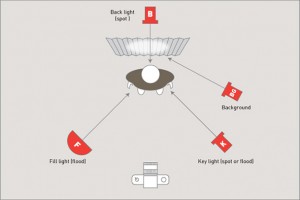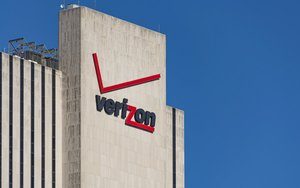— July 3, 2018
Here at Locowise we love having our finger on the pulse of the latest social media analytics. Tracking the trends via our benchmarking tools and allowing digital marketing agencies to automate their reporting process is a top priority for us. Yet, people who are not that familiar with the industry, including business owners, sometimes aren’t able to see the big picture that data provides. In fact, the question of “why tracking social media analytics is so important” is one we get asked a lot from individuals that haven’t tackled the intricacies of social media marketing and management before.
In previous posts on our blog, and if you have been following us closely, you have probably noticed our love for the different ways social media analytics tracking can help your business. In fact, just recently we’ve covered the issue of how the data from major platforms can help you uncover different issues within your business.
![]()
At often times, we also like to get into different topics for those that are just starting out in the digital marketing industry. Inspired to help social media marketing individuals share the importance of analytics tracking, we decided to create this post that focuses on the foundation. Thus, without further adieu, here is exactly why tracking social media analytics is so important for a business. Let’s get started.
Engagement Rate Helps You Have The Right Amount of Posts
One of the most important type of analytics you will often hear digital marketers talk about is engagement rate. On the surface, this number is just there to show you how engaged your audience is. In fact, ER was up until recently a great way to see whether or not your content performs well on social media. Nevertheless, with the fast paced development of the industry, marketers are also now able to read the numbers better and find more insights by doing so. When checking your engagement rate, you are able to note both whether the audience engages with your content on average, but also how much you should post for a certain period.
While to an extent each marketer has their own way to look at the data and the different analytical points, today ER is often used to adapt the quality and number of posts for a social media campaign. While taking a note of the total performance of the content, you are able to see whether or not posting more content on a daily basis harms your social media strategy or not via this simple number.
![]()
The reason why this number is prevalent in helping you determine how much content you should post is that are the algorithms that run how content is shown social media platforms. Depending on the platform of your choice, you either have to account for customer behavior or ensure that the quality of your post is engaging enough that it has a better reach.
The Bitcoin Twitter account has an engagement rate of only 0.04. The low ER shows that there is an overflux of content that the audience ultimately does not engage with and that might not show up as much on people’s feed. In contrast, Stellar Org as the highest engagement rate in the industry with 0.671, showing that they are able to retain a nice balance of number of posts per day that engage 0.67 percent of their audience on average.
Tracking Audience Sentiment Can Prevent PR Disasters
Audience sentiment is another social media score you want to keep a close eye on. The metric crunches the comments an audience has left on your posts and based on the specific wording, it gives you a score. The score itself is usually categorized as positive, negative or neutral. As simple as this score might seem, tracking the sentiment on each post can help you prevent PR disasters.
By keeping a close eye on your sentiment score, you or your social media manager will be able to tell when something goes south instantly. For example, if your score starts dropping down with each particular post, it might reflect a certain issue with your company that you are not aware of. The customer response word-cloud metric can further drive the point of what that particular issue is. Furthermore, by tracking your audience sentiment score for each post, you will be able to tell how your audience reacts to different content and ultimately adapt your further marketing efforts with a certain level of certainty.
![]()
If you have been following the cryptocurrency industry in recent months, it would be of no surprise that the Audience Sentiment for the Twitter social media performance of BitCoin Cash is the lowest in the industry. Standing at only 49, at neutral, this does not reflect an exact “PR” disaster, but the company might benefit from some customer relations advice.
Page Growth Analytics can Boost Your Social Media Strategy
Page growth analytics usually track nothing more than the growth of the following of a social media profile. On the surface, the metric does not seem that crucial in the strategizing process. Yes, it is used as a milestone and is perfect in goal-oriented strategies. Yet, page growth is often disregarded from the standpoint of valuable insights it might provide you with.
One great example of how page growth analytics can boost your social media strategy is via competitor analytics tracking on social media. For example, when the predictive metric of potential growth shows that some of your competitors are rapidly growing in following, it means that they might be doing something right. In addition, the audience growth chart can pinpoint certain moments in a period that end up giving you insights that certain digital marketing efforts have reflected on your social media growth.
![]()
In this chart, you can easily see how Ripple has managed to overtake Bitcoin in terms of audience size in the month of January. The constant back and forth is not only interesting to track, but it also exemplifies the potential insights one might receive about the state of the cryptocurrency market.
Total Engagement Shows The Interest in your Brand
The total engagement on social media within a certain period directly reflects the interest people have in your brand. Of course, this does depend on the type of content you post and how closely it is related to your particular business. Nevertheless, with the high competitiveness in almost every niche, chances are, if your content receives engagement, part of the reason for the particular engagement is the interest people have in your brand.
Closely related to audience growth and other metrics, total engagement can be used to analyze the market response of your content. For example, if you note a sudden increase in total engagement and a drop in the audience growth in a period, then there might be some issues with your business that you need to address. At the same time, such a case can reflect that you are close to the potential market cap size within your niche.
A similar case can be noted with the Top Posts within an industry. By tracking social media analytics you will be able to rank posts based on the different metrics. These top posts can give you further insights about what has been happening in an industry within a particular period. For your own brand, the top posts can give you a better insight of what your audience is interested in both in terms of the type of content and in terms of your business.
![]()
Here we see the huge engagement received by the cryptocurrency Ripple and a decent total engagement by Bitcoin. In January, and after sudden drops in the prices of cryptocurrency, as well as in relation to government regulation, the news cycle in the niche was closely related to both Bitcoin and Ripple. It is extremely interesting to note that with the high increase in the interest in the brand, we can see a direct reflection in the Total Engagement on Social Media. It is even more interesting, that Ripple had a bigger engagement on social media a month prior, noting that social media can sometimes reflect more instant changes to the interest in a brand, even before a news cycle in a niche responds to that particular interest.
Want a free social audit? If you are interested in seeing the big picture of your social media performance, make sure to get your free automated social media audit with Locowise right now. Click here to find out more.
Digital & Social Articles on Business 2 Community
(85)





